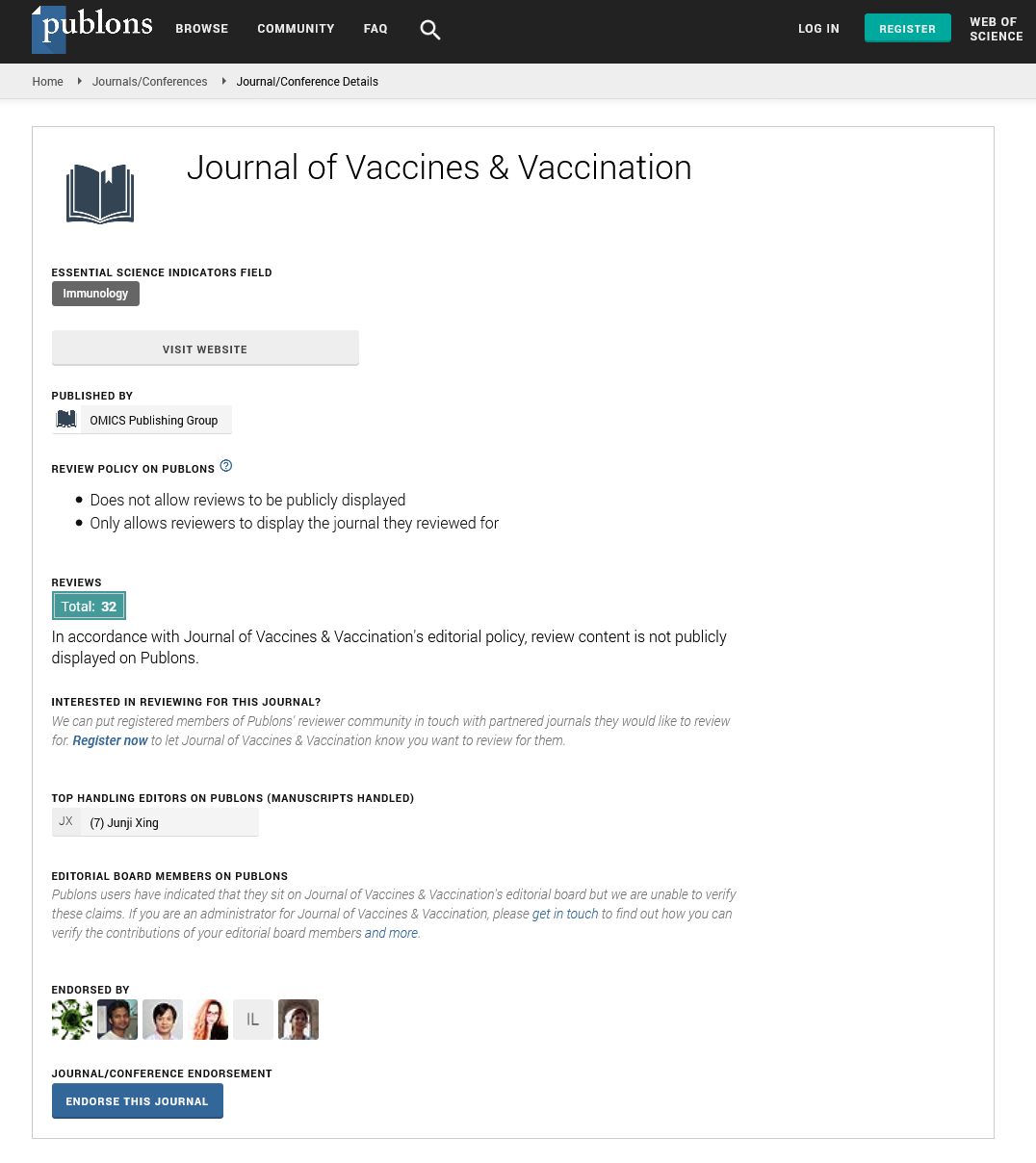Indexed In
- Academic Journals Database
- Open J Gate
- Genamics JournalSeek
- JournalTOCs
- China National Knowledge Infrastructure (CNKI)
- Scimago
- Ulrich's Periodicals Directory
- RefSeek
- Hamdard University
- EBSCO A-Z
- OCLC- WorldCat
- Publons
- MIAR
- University Grants Commission
- Geneva Foundation for Medical Education and Research
- Euro Pub
- Google Scholar
Useful Links
Share This Page
Open Access Journals
- Agri and Aquaculture
- Biochemistry
- Bioinformatics & Systems Biology
- Business & Management
- Chemistry
- Clinical Sciences
- Engineering
- Food & Nutrition
- General Science
- Genetics & Molecular Biology
- Immunology & Microbiology
- Medical Sciences
- Neuroscience & Psychology
- Nursing & Health Care
- Pharmaceutical Sciences
Designing multivalent immunogen for vaccine optimization
29th International Conference on Vaccines and Immunization
March 19-20, 2018 | London, UK
Catherine H Schein
Institute for Human Infections and Immunity-University of Texas Medical Branch, USA
Posters & Accepted Abstracts: J Vaccines Vaccin
Abstract:
Databases now contain thousands of sequences for emerging pathogens. High definition structures have been determined for many of their proteins and even whole viruses. The current challenge is to incorporate this information into the design of 21st century vaccines, which can provide better protection against rapidly evolving pathogens. Conventional vaccines begin by modifying a single strain or combining several wild type strains. The starting point is often a historical isolate, which may have been passaged multiple times in different labs. We have developed methods to extract the information in large multiple sequence alignments to design reference sequences for viral families, and immunogen to protect against many different viruses. First, a PCP-consensus sequence that is most similar in its physical chemical properties to all the sequences in an alignment is chosen. This sequence can then be modified by altering the regions of maximum variability, and known epitopes, to obtain a stable protein that can generate protective antibodies against many different related pathogens. The PCP consensus sequence for a group of proteins (e.g., for each dengue serotype) provides a rational reference that can be used to select the naturally occurring strain that is closest to the mean for the family. This study will show how the method can be used to produce a tetravalent antigen against all four dengue strains and to define the common properties of enterovirus VPgs and allergenic proteins.

